With mid-term rentals booming in popularity over the last few years, including an impressive 25% year-over-year* increase in longer stays coming out of the Covid-19 pandemic, now is the perfect time for savvy property managers to diversify their portfolios with the help of a few mid-term rental platforms.
But when it comes to advertising your home, the question stands in turn: what is a mid-term rental and what’s the best home for your listings? And does it have to be Airbnb again?
The short answer is: no, it does not. In fact, listing your mid-term rentals in platforms purpose-built for them can help you tap into a much more niche market than Airbnb and, therefore, increase your revenue. Read on for a comprehensive list of some of the best midterm rental platforms out there, with their positives and negatives listed for your convenience.
What is a mid-term rental?
A mid-term rental, or MTR for short, fills the gap between a short term rental (STR) and a long term rental (LTR). Whereas STRs tend to refer to booking periods ranging from a couple of nights to a month, MTRs tend to be booked out for a duration of 1 to 6 months. After 6 months, the rental would be considered a long-term rental. Check the local laws and regulations on what’s consider to be a mid-term rental in your country before jumping in.
What are the best markets for mid-term rentals?
MTRs tend to attract a diverse pool of tenants, including but not limited to:
- Traveling professionals
- Students
- Relocating families
- Digital nomads
According to professional property managers from **GuestReady, Blue Gems Group, and PriceLabs** (via Rental Scale-Up), some of the best markets for MTRs are those where these kinds of tenants may be easily found: think college towns, commerce hubs, or hip cities with large populations of young professionals. In the USA, Austin, Dallas, and New York City top Homad’s list of Top 100 Mid-Term Rental Cities, while Rental Scale-Up mentions London, Dubai, and Berlin as more international options.
Here’s where you can list your property for corporate housing and what clauses to include in your mid-term rental agreement.
1. Furnished Finder

Furnished finder is undoubtedly one of the most well-recognized mid-term rental platforms globally.
What is it?: This well-known alternative to Airbnb is the USA’s foremost property listing site specifically dedicated to MTRs.
Pros: For an annual fee, Furnished Finders gives you access to 15 million annual users and offers hosts a variety of tools, such as tenant screening services, renter’s insurance, leases, and more. Best of all, Furnished Finders does not charge commissions or booking fees, meaning you keep 100% of the rent, 100% of the time.
Cons: Furnished Finder’s popularity is its biggest strength as well as its greatest weakness. With more than 300,000 properties on offer, some MTR owners report that it is sometimes difficult to get noticed.
2. Homads

What is it?: Homads is a US-based MTR listing platform with a focus on offering fully-furnished housing to people in transitional periods, who may be deciding where to establish their forever home.
Pros: It is completely free to list your property on Homads in exchange for a 3% booking fee for hosts. If that is not to your taste, they also have a number of annual plans available to circumvent this. The platform also allows hosts to set their own rental terms and communicate directly with potential guests, creating an efficient and transparent rental process.
Cons: If your property is not a single-family home, it might be difficult for it to get the attention it deserves on this platform, as it is catered mostly to relocating families. (But if you are looking to list a family home, then Homads might be for you!)
3. Blueground
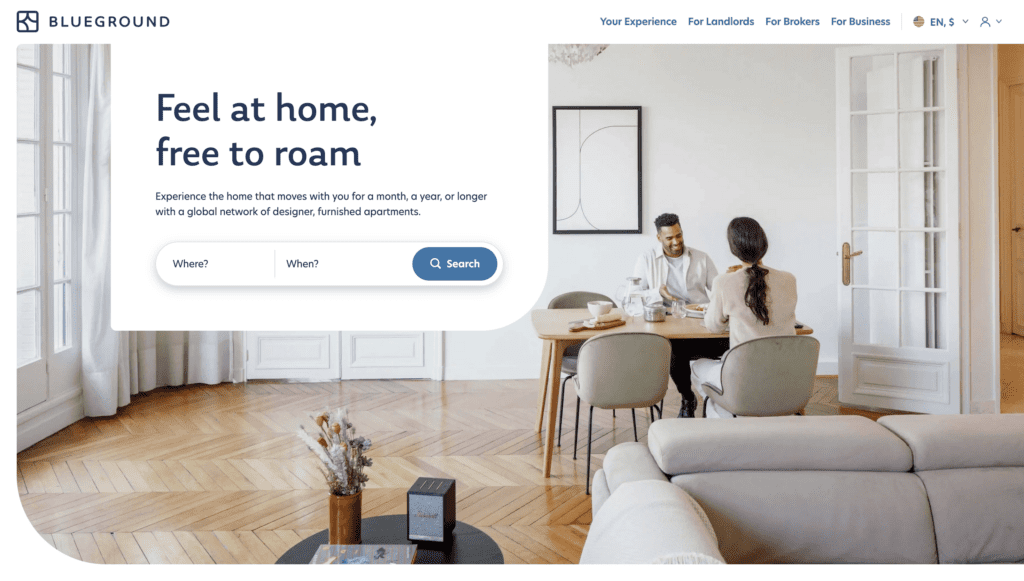
What is it?: This booking platform is one of the most well-known property listing options with operations around the world.
Pros: Beyond its international focus, Blueground is a fantastic pick if what you want is some peace of mind. Thanks to its rental guarantee, the platform will pay you every month regardless of if your property is empty or not. They will also furnish your property for you, making it a great option for property managers with a few unfurnished properties in their portfolios. Blueground will even find you vetted tenants and take care of the property’s maintenance on your behalf. Truly, everything is covered!
Cons: Blueground is one of the mid-term rental platforms that allows for “hands on” approach that is not for everyone. It can be convenient, but listing with also means giving up quite a bit of control over the property (and its profits). They are also only interested in new or newly renovated homes, and all new listings must be reviewed, meaning that advertising your property on Blueground might be a bit of a long-term process.
4. Corporate Housing by Owner [CHBO]
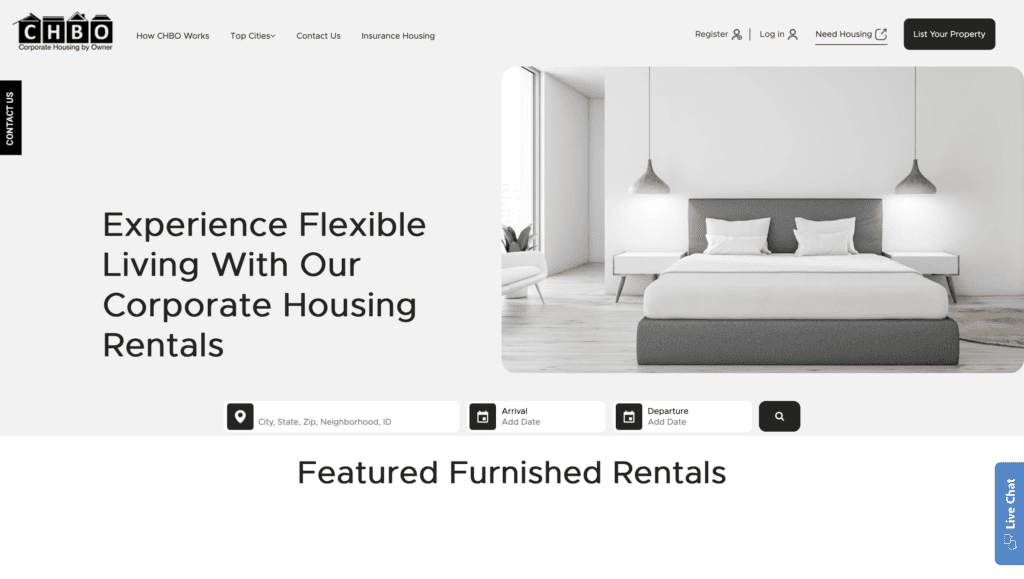
What is it?: CHBO is the largest provider of furnished rentals throughout the United States and Canada, with an intense focus on corporate renters and companies.
Pros: The specificity of CHBO’s client base can be a source of comfort for many property managers: no longer will you be switching out a digital nomad for a rowdy student followed by a family of four. That in and of itself can take a lot of the stress out of hosting. Property managers who have used the site before have also praised the fact that they are able to speak to potential renters before finalizing a reservation, giving them the chance to get a feel for their circumstances and build a trusting landlord-tenant relationship.
Cons: With annual plans starting at $399, CHBO is one of the more expensive listing options out there. While they do offer to extend your annual listing for an additional 6 months free of charge if you are unable to rent your property within 30 days, the upfront cost of listing cannot be ignored.
5. Nomad Stays

What is it?: As its name implies, Nomad Stays is a platform aimed at capturing the digital nomad market in cities around the world.
Pros: As with CHBO, the specificity of the market niche in which Nomad Stays operates can be a boon, allowing property managers to tailor their properties exactly to this kind of tenant. It is also boasts $0 fees on bookings as well as 0% commissions. And if you have a particularly large property you are trying to monetize, you’re in luck! Nomad Stays waives all annual listing fees for stays with more than 5 rooms.
Cons: Nomad Stays can be particular about the properties they decide to list on their platform, and inclusion is not guaranteed. A one-off $39 application fee must be paid up-front for your property to be considered and, even then, it will only be picked up if its amenities are suitable for digital nomads who engage in remote work.
6. Landing
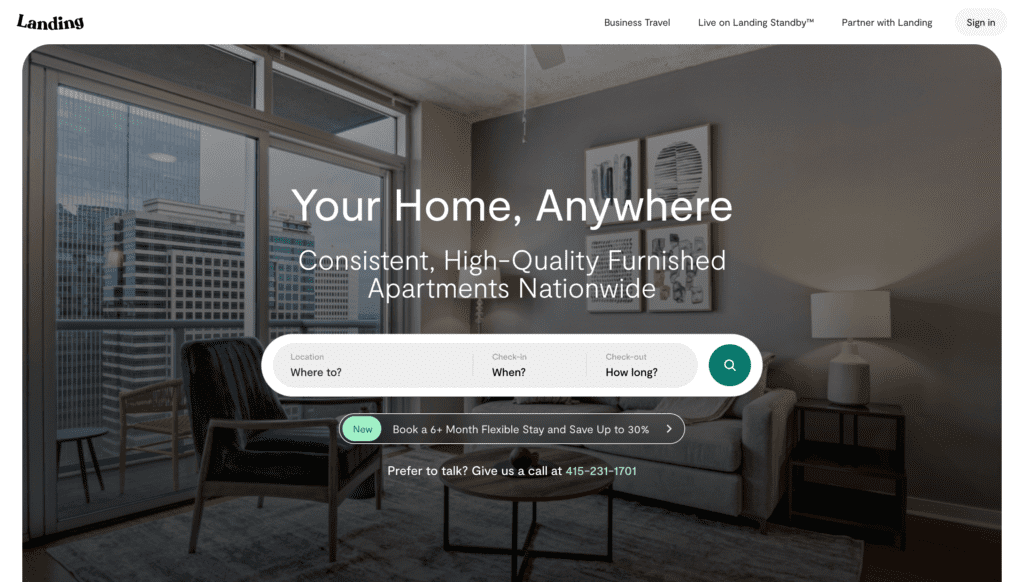
What is it?: Formerly known as “Hello Landing”, this platform operates across the USA to offer renters flexible stays, with an emphasis on remote workers.
Pros: One of Landing’s highlights is its average lease length of 3-to-6 months. This is higher than other platforms, which may average out at closer to a month or two. This comes with less hassle for property owners as well as a more stable income for longer. Landing’s Autopilot program also offers to furnish and fill vacant units with FF&E installation, marketing, and operations are covered at no extra cost.
Cons: Like others on this list, Landing is one of those platforms that requires a bit more effort to get into. They seem to be interested in working with property managers with large portfolios only, and all properties and hosts go through a rigorous screening process (as do their renters). Their 8% service fee is also one to keep in mind.
7. Housing Anywhere

What is it? This platform operates with an international mindset and caters mostly to university students.
Pros: Housing Anywhere operates in over 30 countries and has partnered up with over 150 universities, securing a stream of platform visitors in the millions. Their secure payment service is tailored to international ensure rent payments arrive to you on time, no matter the country your tenant comes from. And in case that wasn’t enough, their landlord guarantee means you will receive the first month’s rent even if the tenant cancels.
Cons: Of course, students are not every landlord’s cup of tea. But given listing your property on Housing Anywhere is free, it could be worth giving the platform a try.
8. Spotahome
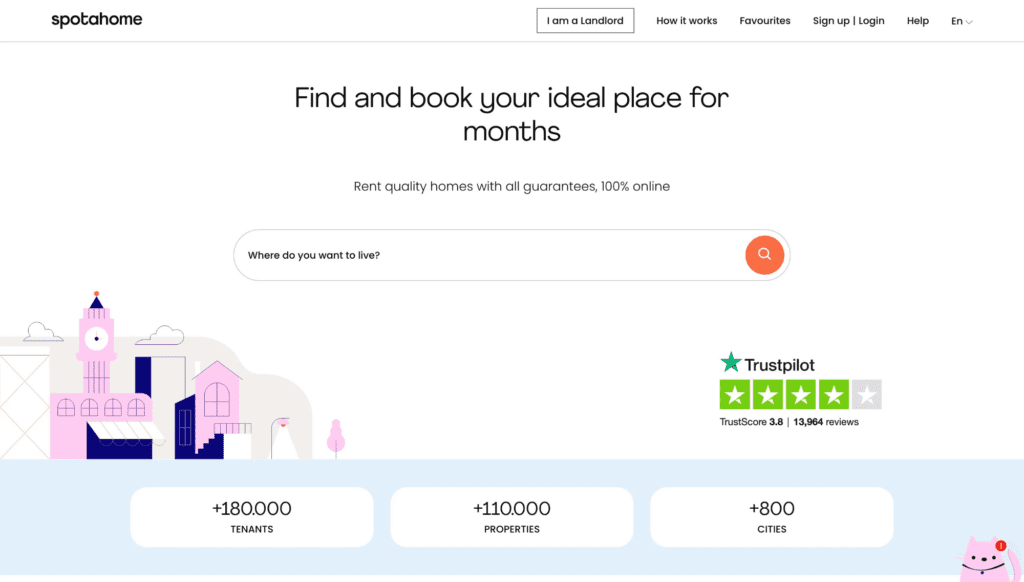
What is it?: Spotahome is a 100% online booking platform that operates worldwide, offering apartments, rooms, studios, and student residences.
Pros: One of the strong suits of Spotahome is its flexibility: it offers three different types of mid-term rental management plans for home ranging from complete management of your property to an absolutely free listing-plus-booking-fee model. You can also list nearly any kind of property, from a room in your house to a full home. Finally, Spotahome are also deeply committed to smooth communication with international clients, offering customer support in several languages on both sides.
Cons: A number of Spotahome’s perks, including the a rent guarantee system, are only reserved for paying members of their Plus programme.
9. Sabbatical Homes
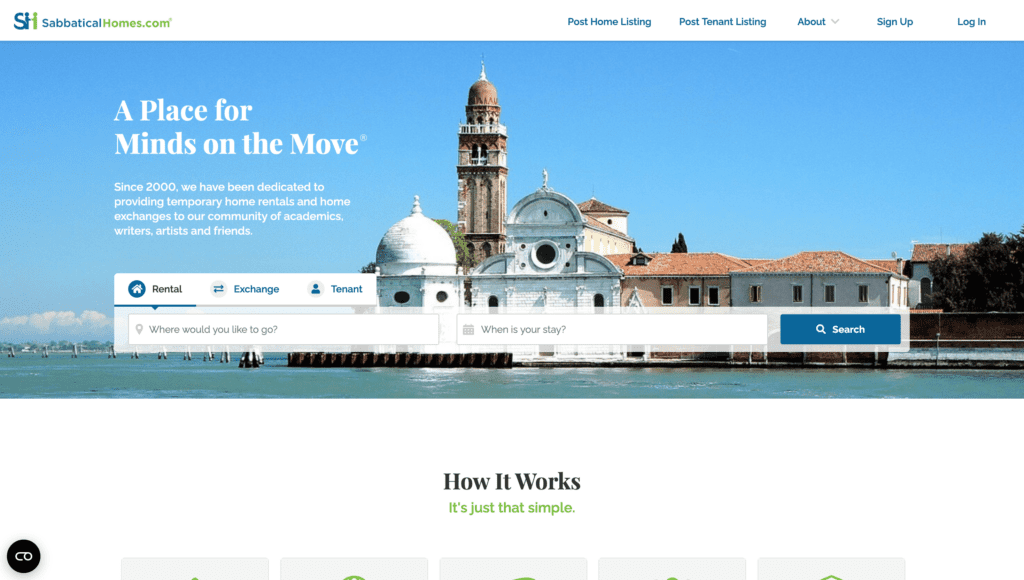
What is it?: As per its name, this platform caters specifically to students, academics, writers, artists, and researchers.
Pros: Sabbatical Homes operates all over the world and offers a good range of options for property managers, as it allow you to list not only full properties, but also allows for home exchanges. It also has the advantage of securing highly-educated tenants who are usually very pleasant and desirable to rent to.
Cons: This platform is specifically aimed at fostering an academic community, and charges an annual fee from landlords equivalent to their academic position ranging from $65 to $175 annually. This does make Sabbatical Homes somewhat of an exclusive club, but a nice one to join if you happen to be an academic looking to grow your community (and network a bit on the side).
10. Flatio

What is it?: Flatio is an MTR rental platform aimed at digital nomads, remote workers, and slow travelers.
Pros: This platform boasts a 0% listing fee, as well as a particularly robust insurance plan for landlords in partnership with AXA. Additionally, Flatio boasts an impressive 92% average occupancy rate and claims that most of their tenants are willing to pay up to 25% more than the current market standard. The combination of these two facts could also mean a pleasant uptick in revenue for you.
Cons: Currently, Flatio operates mostly in Europe.
…But what about Airbnb?
Yes, Airbnb is still a good option to list your MTRs. While its offering is far greater and less specialized, many property managers still use it for the sake of its recognizability and the flexibility it can offer. Just make sure to include these 10 “must-have” clauses to your mid-term rental agreement.
At the end of the day, smart property managers list across multiple platforms. So if you already use Airbnb or are drawn to its familiarity, do use it. However, it would be wise to consider alternatives in order to reach a more specialized market.
How can you market your mid-term rental to maximize your leads?
- Invest in amenities that will appeal to MTR tenants. This means making sure your property is equipped with a fast Wi-Fi connection, a workspace, and appliances like a dishwasher or a microwave. Then, make sure to highlight these in your listing, both through pictures and textual descriptions of the space and what it has to offer.
- Research your area and narrow your niche: Figure out your mid-term rental strategy first. Are there any universities nearby? What about large businesses or hospitals? If you are able to figure out what kind of MTR tenant group to target, it will be easier to adapt your rental to their needs and market to them more effectively.
- Create a direct booking strategy: One of the many advantages of MTRs is that your tenants will stay at your property for longer periods of time. This creates the opportunity for you to make a loyal customer out of them by offering them a fantastic stay by following our advice above. Once their stay is complete, who is to say they won’t want to come back for seconds? Creating a direct booking strategy can be a great way to offer these special guests perks while relying less on third-party websites.

